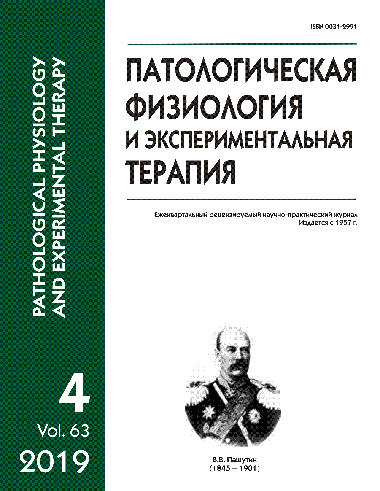The role of matrix metalloproteinase 9 and its inhibitors in scarring processes following surgery for primary open-angle glaucoma
Abstract
Surgery is one of the major treatments for glaucoma; however excessive scarring of created outflow patways affects the long-term outcome. At the present time, scarring processes are not sufficiently studied. Aim. To evaluate the role of matrix metalloproteinase 9 and its inhibitors in scarring after surgical treatment of open-angle glaucoma. Methods. Concentrations of matrix metalloproteinase 9 and tissue inhibitors of metalloproteinases 2 and 3 were measured in tear fluid of 37 patients (mean age, 52.8) with active primary open-angle glaucoma in dynamics during the postoperative period to identify possible markers of excessive scarring. Based on the surgery outcome, all patients were divided into two groups, with a favorable outcome (without excessive scarring) and an unfavorable outcome (with excessive scarring) in the created additional outflow pathways for the intraocular fluid in the postoperative period. The control group included 20 subjects aged 50-66 without eye disease or somatic disease at exacerbation stage. Results. Analysis of changes in concentrations of matrix metalloproteinase 9 and its inhibitors in the postoperative period showed their inverse relationship with the surgery outcome. The higher was the metalloproteinase 9 level and the lower the level of tissue inhibitors of metalloproteinases 2 and 3 the higher was the probability of unfavorable outcome evident as excessive scarring of the formed additional pathways for tear fluid outflow in the postoperative period. Conclusion. Postoperative monitoring of metalloproteinases and their tissue inhibitors allows to predict early scarring and to develop new treatments both in early and late postoperative periods.






